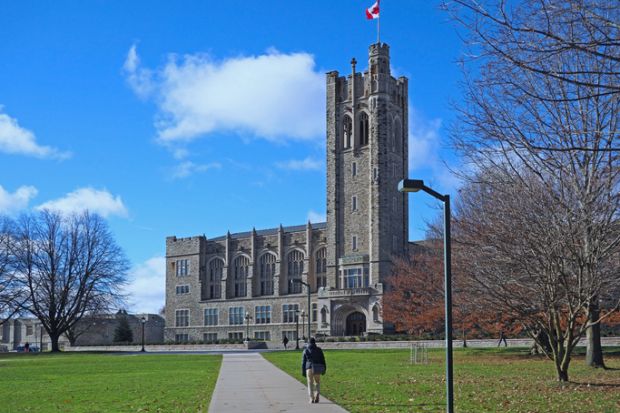Western University has retreated from a plan to confront sexual assaults on campus and violence in the surrounding community by asking everyone at the Canadian institution to hang identity cards from their necks.
After a week of growing protest, Western’s president, Alan Shepard, cancelled the initiative, admitting it was done with virtually no consultation of the campus community. Staff and students were “strongly encouraged” to wear the lanyards on campus.
“It never should have seen the light of day in the first place,” said Nigmendra Narain, a political science lecturer who serves as president of the University of Western Ontario Faculty Association.
Dr Shepard bluntly acknowledged as much, according to the student newspaper, The Gazette, which described the US-born president as apologising to a faculty meeting, saying, “We screwed this up.”
Either way, Western University has clearly been shaken by some devastating acts of violence. In June, a motorist intentionally drove into a Muslim family in a neighbourhood just a few minutes west of campus, killing four people – including an engineering student at Western – and injuring a child. In September, social media reports suggested that 30 female students at Western had been drugged and sexually assaulted at various events, mostly on campus.
Those cases and other reports of sexual violence prompted more than 10,000 students, faculty and staff at the 40,000-student campus in southwestern Ontario to walk out of classes in protest.
Dr Shepard told faculty that university officials had ordered the lanyards for a planned system of verifying Covid vaccination status. They later decided that the card-holders could be used to improve campus safety by giving everybody at Western the ability to quickly see who was officially part of the community.
Mr Narain and other faculty members quickly protested, saying that the lanyards would serve to segregate people and force them to publicly display their identifying information. Some students also questioned the practicality of the idea on a 1,200-acre campus through which residents of the surrounding community often walk to reach other neighbourhoods, to use publicly available facilities, or to otherwise visit.
Despite the university’s retreat on the lanyards, it remains on target to implement an online system beginning in January that would require outsiders to register their visits at least three days in advance.
Faculty remain opposed to that idea, Mr Narain said. Such a system, he said, “will create a barrier between Western and our broader communities, and does not align with the strategic plan of our open, accessible public university”.
Register to continue
Why register?
- Registration is free and only takes a moment
- Once registered, you can read 3 articles a month
- Sign up for our newsletter
Subscribe
Or subscribe for unlimited access to:
- Unlimited access to news, views, insights & reviews
- Digital editions
- Digital access to THE’s university and college rankings analysis
Already registered or a current subscriber? Login










